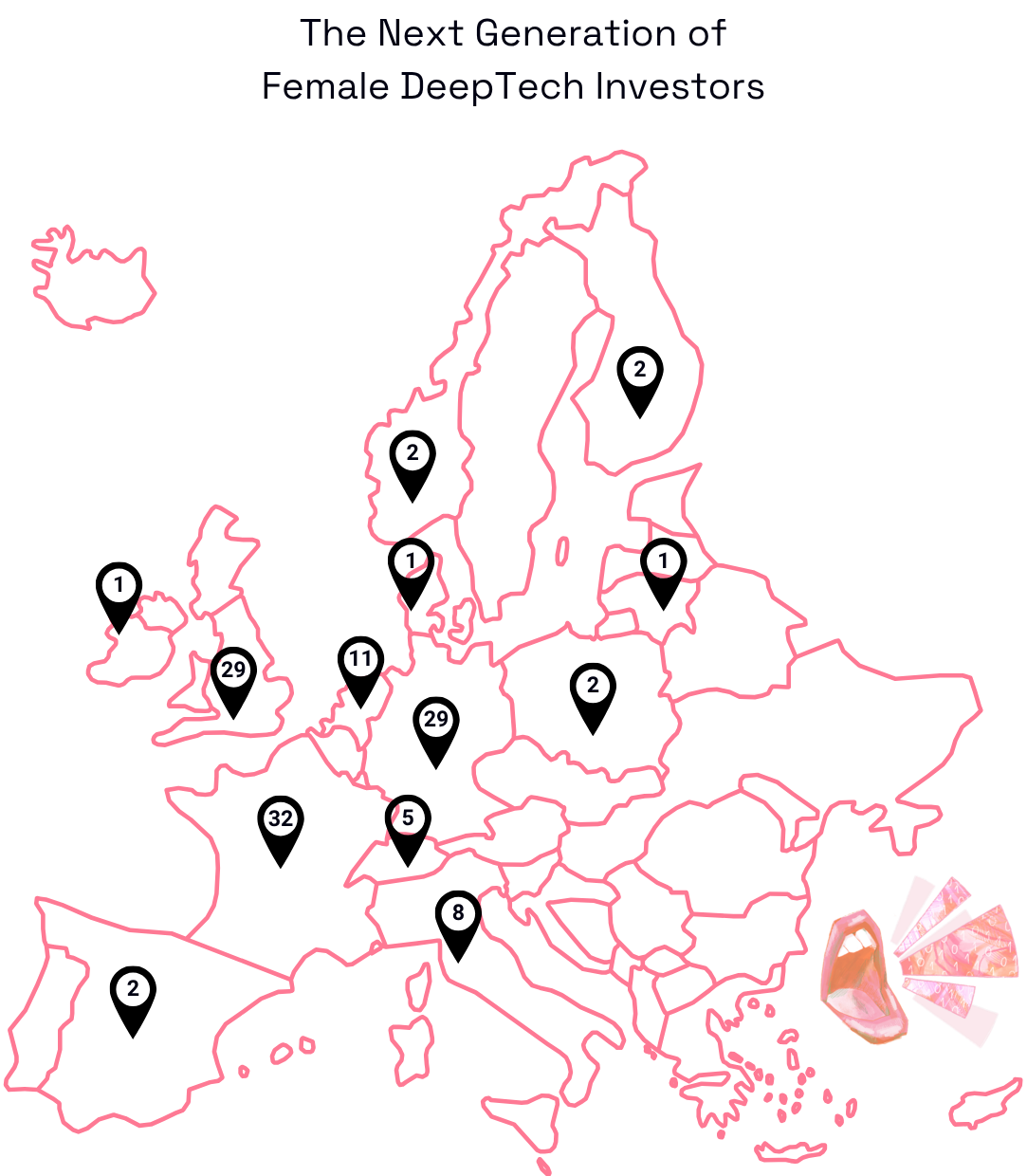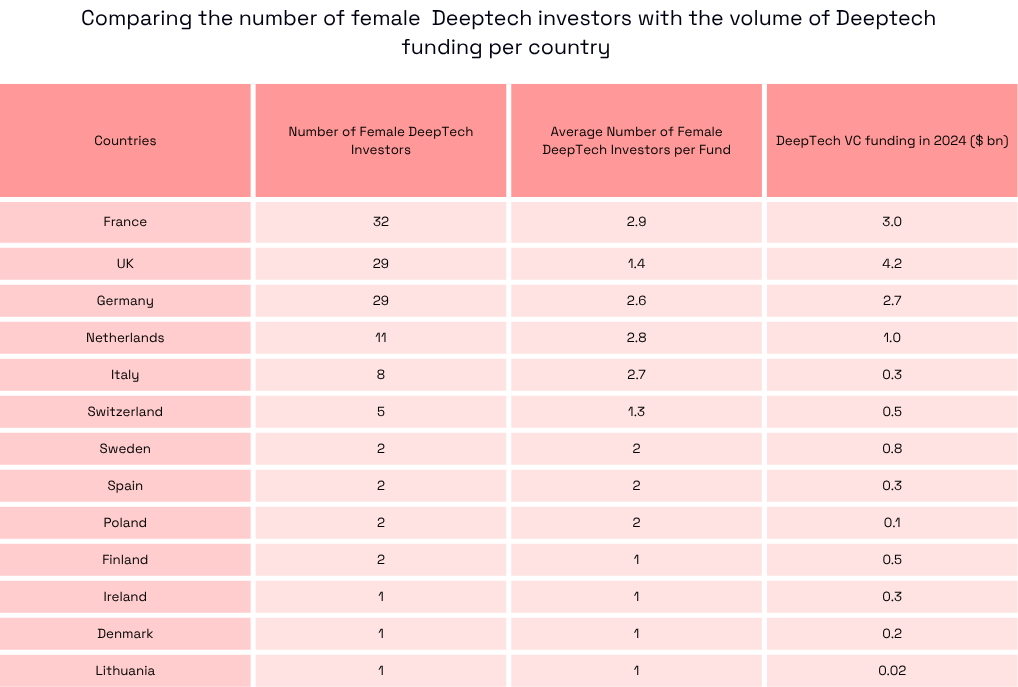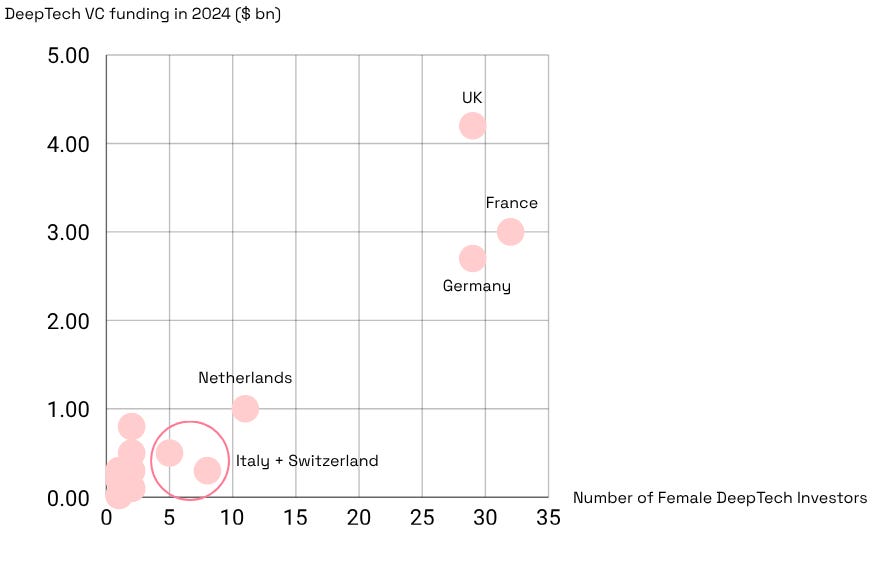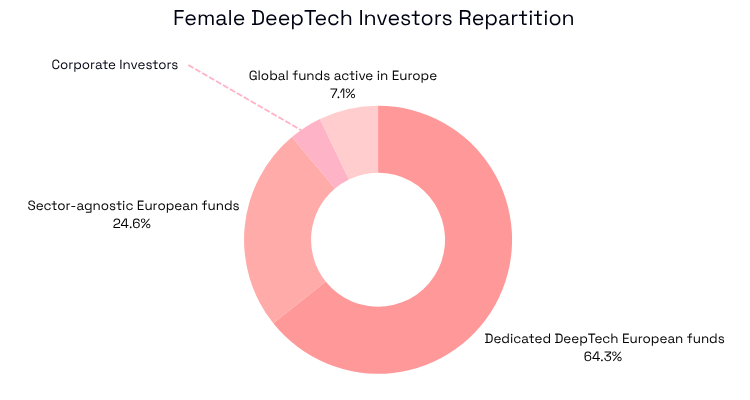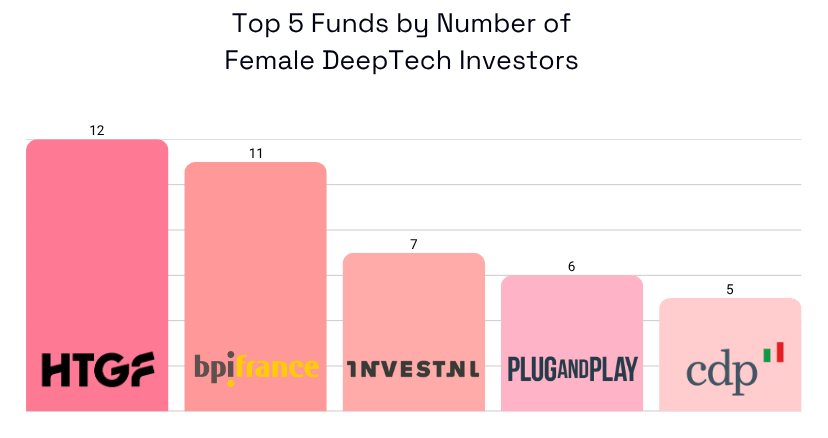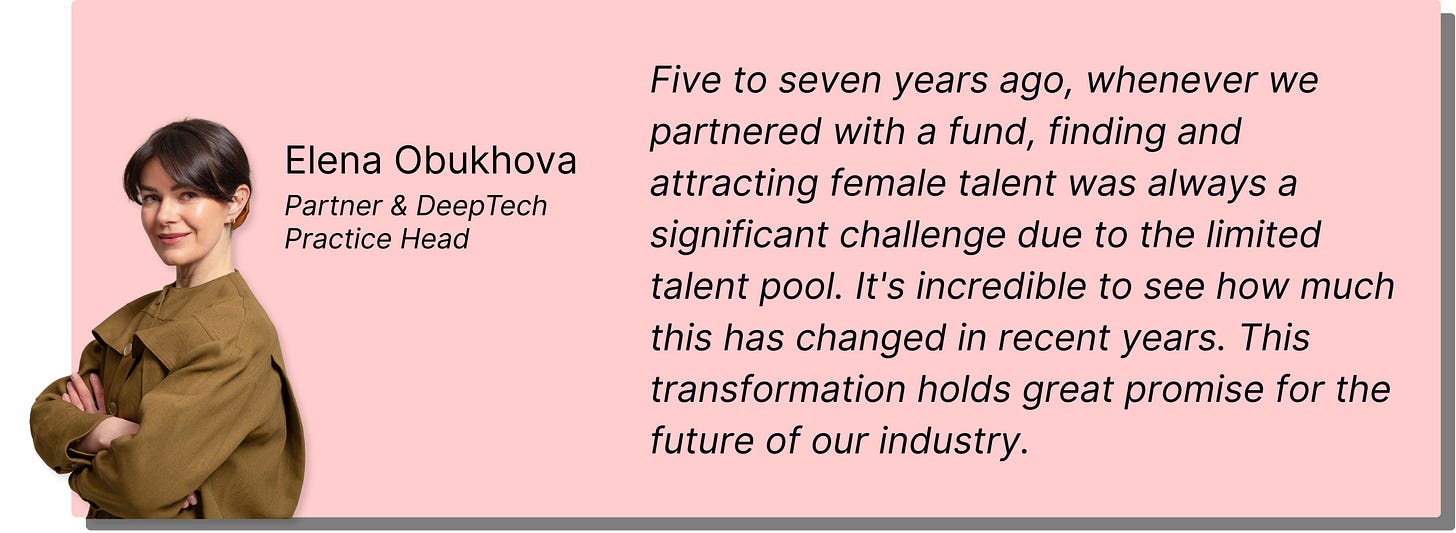Mapping the Future Generation of Female DeepTech Investors in Europe
37% of the European junior DeepTech investors are women.
We've mapped out Europe's junior female DeepTech investor talent pool to highlight emerging shifts in a traditionally male-dominated sector. DeepTech's close ties to STEM fields have historically posed barriers, but we were curious to see how this landscape is changing. So, where is the glass ceiling finally cracking, and which funds are leading the way? Here's what we discovered.
Mapping Europe's Junior Female DeepTech Investors
We analyzed junior investment roles (Analyst, Associate, Investment Manager) within both specialized and generalist funds actively investing across DeepTech. In total...
We mapped out 117 funds and identified 342 people specifically involved in DeepTech*.
Of those 342 individuals, 126 are women. That's around 37% and this is actually encouraging given DeepTech's strong ties to STEM fields, where women have historically been underrepresented.
On that matter, it’s interesting to highlight that 48% also hold a STEM-related Bachelor’s, Master’s, MBA, or PhD degree.
So, where are those women located, and which companies do they work for? Let’s explore further.
Which countries have the highest concentration of up-and-coming Female DeepTech investors?
France, Germany, and the UK exhibit the strongest female representation, which isn't surprising given that they attract the most DeepTech funding and boast a wide range of DeepTech funds. With those strong ecosystems, you'd naturally expect a higher proportion of female DeepTech investors in those countries.
For the rest, Italy and Switzerland emerge as outliers, showing low DeepTech VC funding, yet standing apart with notably higher female representation among investors. Conversely, Sweden presents a low number of female DeepTech investors, while having a substantial volume of DeepTech VC funding (see below).
However, if you look at the average number of women per fund, Germany and the UK (respectively 2.6 and 1.4 female DeepTech investors per fund) trail behind countries like the Netherlands and Italy (respectively 2.8 and 2.7 female DeepTech investors per fund). This indicates a higher proportion of women investors within funds in these smaller ecosystems.
What type of funds do they work for?
64% of those female DeepTech investors work for dedicated European DeepTech funds such as:
OTB Ventures, a VC firm in Central & Eastern Europe, invests in early-growth companies.
Invest-NL, a private firm funded by the Dutch Ministry of Finance, supports early-stage companies.
Public investment funds are also demonstrating notably higher gender diversity compared to their private counterparts. For example, the British Business Bank has committed £500 million to invest in diverse and emerging fund managers, and we actually found 43% female representation within this public fund.
Conclusion: Why This Matters For You?
We've previously examined various DeepTech sectors, including Defense, Novel Robotics, Energy, and Batteries, and have consistently observed a notably low female presence. But this time around, you'll find a promising trend: 37% female presence among junior investment roles, from Analyst to Invesment Manager.
What's even more encouraging is that about half of those female DeepTech investors hold a STEM degree and work within dedicated DeepTech funds. It's fantastic to see more women entering this field, bringing diversity not only in their networks but also helping to foster investment in more female-led DeepTech companies.
In an upcoming piece, we'll examine female representation at the Partner level to see if those patterns hold among senior decision makers. And if you're involved in DeepTech investment, or you're hiring a leader in DeepTech, let's talk. 🙂 Elena Obukhova
*Quantum computing & communications, Robotics & industrial automation, Artificial Intelligence & Machine Learning infrastructure, Advanced materials & photonics, Semiconductors & micro‑electronics, Space technologies, Synthetic biology & bio‑engineering, Energy storage & battery technology, Nuclear fusion & advanced fission, Clean & renewable energy generation, Advanced/additive manufacturing & nanofabrication, Autonomous mobility, Cyber‑physical defense & security systems, Internet‑of‑Things & edge computing, High‑performance computing.




